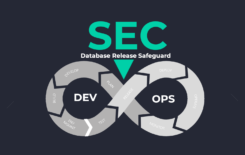Data delivery can be risky. Mistakes can be time consuming and costly to fix. Continuous integration for the database allows for changes to be integrated into a shared repository as often as possible to ease changes and quickly identify problems.
Refined database lifecycle management techniques, such as continuous integration for the database can ease the process of development, release, maintenance, and deployment, reducing cost and increasing quality.
With database continuous integration (CI), database changes need to be integrated into a shared repository or environment multiple times a day, or as often as possible, to ease change and quickly identify problems while they are still manageable.
Advantages of Continuous Integration for the Database
While CI does not get rid of errors in code, it allows for rapid error detection and easy error location detection. This means that if a developer introduced an error in the code, or if the new code causes an already working piece of code to fail, the team is notified immediately and no further integrations occur until the issue is fixed.
This streamlined process makes for safer and more rapid deployment of changes, because errors can be easily traced back to its source, the previous integration, shortening the time between integrations and offering substantial cost-savings in development.
Best Practices
The following best practices must be in place for continuous integration to run seamlessly:


- Maintain a single source of truth
- Build automation
- Rapid, self-testing builds
- Deployment automation
- Visibility into the development cycle for all team members
- Testing in a close of the production environment
Obviously, during active development, all components are liable to be tinkered with or updated. When any part of an application changes, a complete integration as well as integration tests must be implemented.
Integration must be continuous at this stage because change is constant, and to continuously prove that all code has stayed intact throughout the changes, integration tests must be run.
Once it is proven that all database access methods perform correctly, the same process occurs again following another change, prompting a fresh build, followed by integration and its tests. This method will best guarantee a working version of the database at every stage of the development cycle.
Applying Continuous Integration to the Database
Continuous integration within database development is harder to come by than CI in application development. It is for this reason that later stage integration of code into the database has more potential for unpleasant surprises such as errors in manual scripting, which could lead to costly and unnecessary delays.
Database CI handles this problem and exponentially minimizes the element of risk, leading to more reliable deployment and more frequent releases.
With DBmaestro TeamWork, continuous integration for the database is achievable. Bringing the database up to speed with native/application code integration allows you to leverage the same proven best practices for the database.






